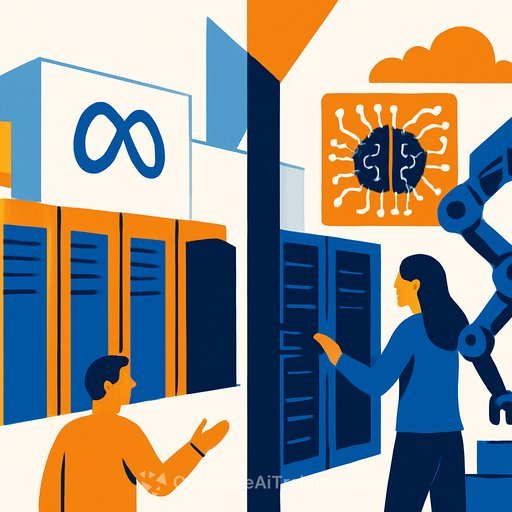Bajaj Finance Activates FinAI, Balances AI Expansion with Slower MSME Lending in Q1FY26
Bajaj Finance has moved from planning to execution in its FinAI (Financial Artificial Intelligence) transformation, deploying AI capabilities across multiple business functions. In its Q1FY26 earnings, the company confirmed AI is now live in revenue generation, cost management, customer engagement, and underwriting processes. This marks a significant shift from the previous quarter when FinAI was still in the conceptual stage.
At the same time, Bajaj Finance is deliberately slowing down lending growth in the MSME and auto loan sectors due to rising stress levels. The company is also investing in cybersecurity infrastructure and positioning its mobile app as a comprehensive ecosystem, focusing on gradual development rather than a rapid super app launch.
FinAI Deployment Across the Organization
Last quarter, Bajaj Finance planned to roll out 100 AI applications across its operations. Now, the implementation has begun. Rajeev Jain, Vice Chairman and Managing Director, stated that FY26 will be pivotal for the FinAI strategy, with these capabilities becoming visible both behind the scenes and soon within digital assets.
The AI integration extends to Bajaj Finance’s subsidiaries. Jain noted ongoing efforts to raise technology standards at Bajaj Finance Securities Limited (BFSL) and Bajaj Allianz Life Insurance Company (BALIC), which lacked such infrastructure before. This company-by-company approach aims to elevate the entire group’s AI maturity.
Long-Term Digital Vision and Super App Progress
Bajaj Finance sees its app as a long-term ecosystem rather than a quick brand label. Jain emphasized that building a super app is a process, not a one-time launch. The app currently serves around 90 million customers and integrates a distribution infrastructure that continues to expand.
Recent updates include the addition of government services and integration with the Open Network for Digital Commerce (ONDC). Customers can now access various government services directly via the app, and the platform processes around 30,000 ONDC transactions monthly.
Planned improvements to customer experience and product offerings include tighter integration with the stock market segment, allowing users to view their portfolio within the app more effectively in the coming months.
AI-Driven Growth and Loan Approval Innovations
Bajaj Finance aims to reach 120 million customers by the end of FY26. A key driver is AI-enhanced lending, making loan approvals more accessible through the app. For example, consumer durable (CD) loans previously had low approval rates on the app because the app’s risk engine operated separately from that used in physical stores.
After 18 months of development, the risk engine integration now allows smoother approvals, enabling customers to apply for loans like phone or appliance financing without needing an Insta EMI card. This opens the door to more flexible loan products tailored to customer preferences.
Strategic Partnerships, Funding, and Cost Management
Bajaj Finance continues to pursue strategic partnerships while maintaining strict cost control. Jain mentioned ongoing efforts to optimize funding costs through proactive deposit pricing and managing the liability mix, ensuring momentum is sustained without compromising financial discipline.
Asset Quality and Stress Management
Early intervention remains the focus for managing asset quality. The company is targeting improvements in early-stage delinquency (Month on Book) and reducing portfolio vintage. In Q1FY26, Bajaj Finance provided restructuring options to borrowers amounting to Rs 219 crore.
Cautious Approach in MSME and Auto Finance
The company is deliberately slowing growth in MSME and auto finance sectors to mitigate risk. Jain highlighted strains in the MSME segment, with expectations of much slower growth starting from Q2FY26. Additionally, Bajaj Finance will wind down its captive loan book, reducing it to around 3,500–4,000 loans by March 2026.
Pruning efforts in other segments started earlier this year, with MSME adjustments still underway.
Financial Highlights for Q1FY26
- Net profit rose 22% year-on-year.
- Net Interest Margin increased by 22%.
- Assets Under Management (AUM) reached Rs 4.4 lakh crore, up approximately 25% year-on-year.
- Cost of funds stood at 7.79%, with full-year guidance between 7.60% and 7.65%.
- Gross Non-Performing Assets (NPAs) were 1.03%, net NPAs at 0.50%.
- Added 4.7 million new customers and booked 13.5 million new loans during the quarter.
Bajaj Finance’s approach reflects a balance between leveraging AI for operational efficiency and growth while managing credit risk carefully, especially in sensitive segments like MSME and auto finance. The company’s gradual but steady app ecosystem development and AI integration offer practical insights into scaling digital finance operations with risk controls in place.
For finance professionals interested in AI applications in lending and risk management, exploring further AI tools for finance can provide useful perspectives on how such transformations are executed in practice.
Your membership also unlocks:





